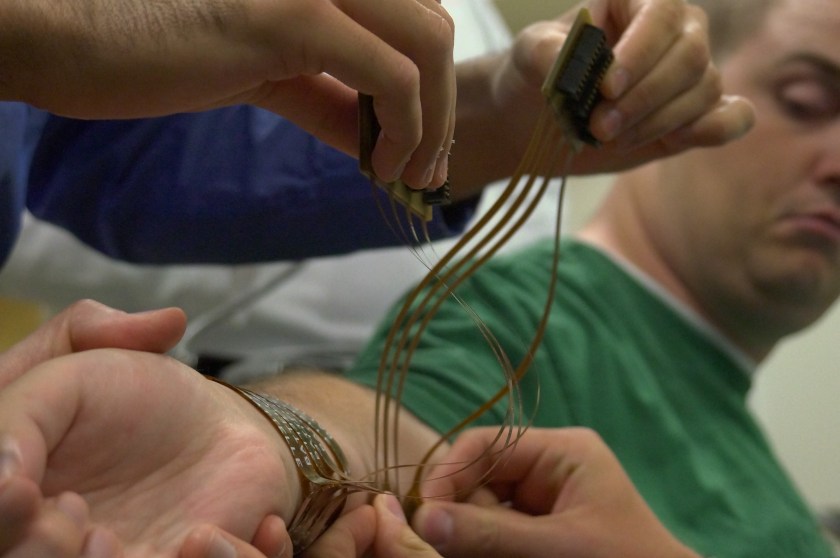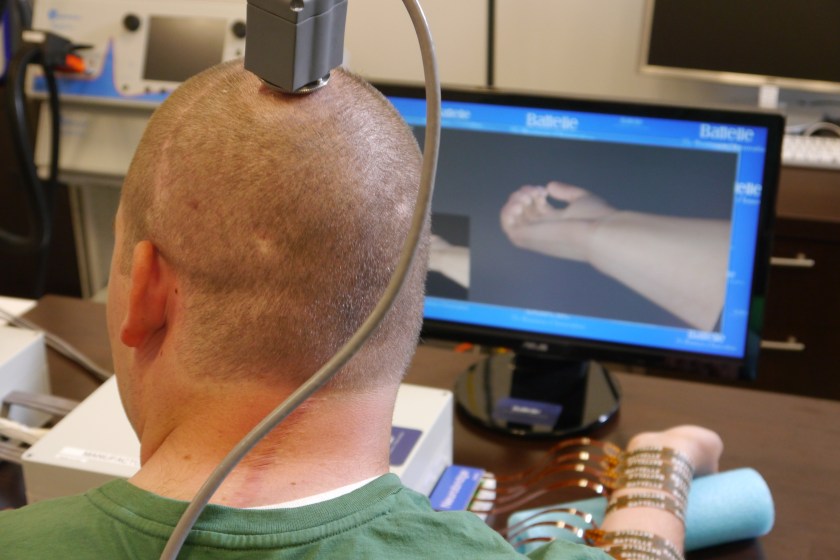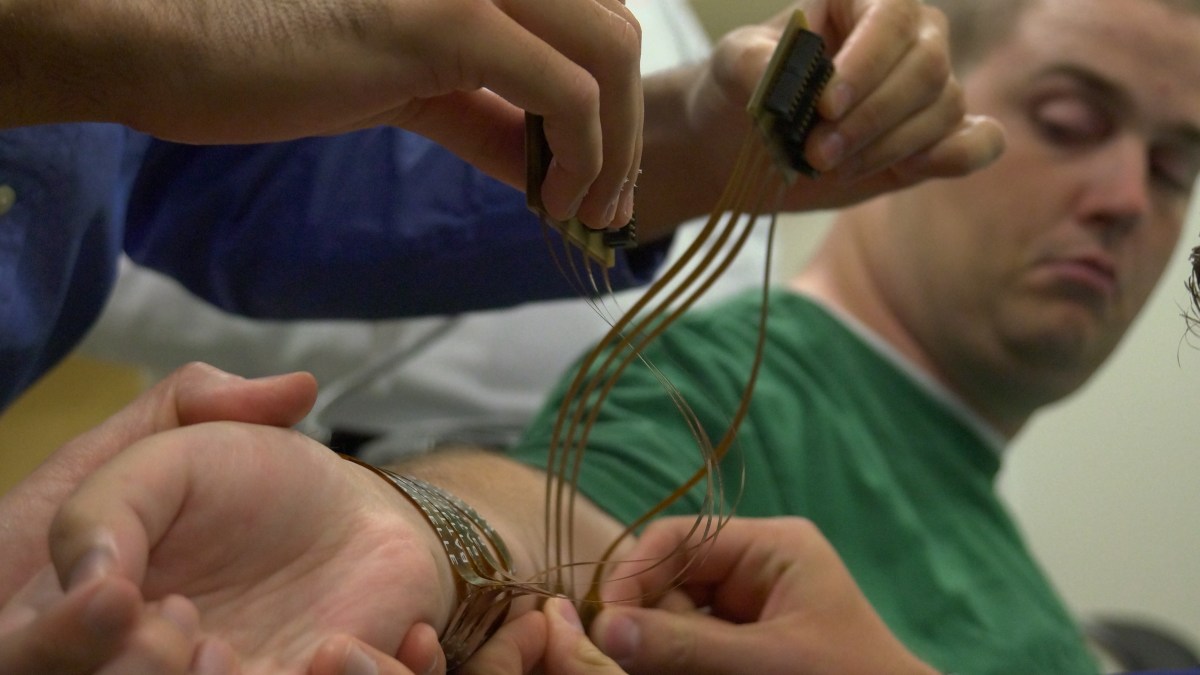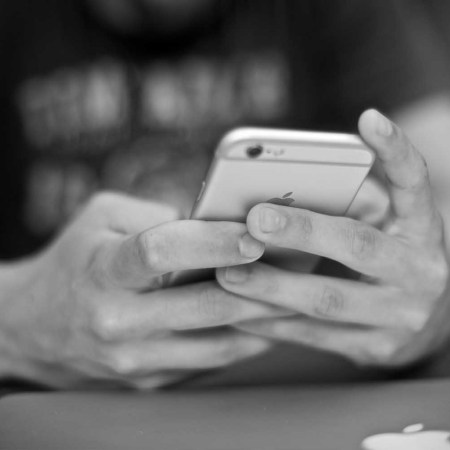
When Ian Burkhart broke his neck at the age of 19, he lost all movement below his shoulders. These days, he’s swiping credit cards and playing Guitar Hero. Quadriplegic? Not quite. Thanks to the advancement of neural prosthetic systems, Burkhart has regained the use of his right hand.

How was this able to happen? A team of scientists from Ohio State University and Battelle Memorial Institute created a shortcut from Burkhart’s brain to the nerves in his hands. The signal for it to “move” was being sent, but his hand wasn’t receiving it. After a micro-electrode array was implanted in Burkhart’s brain, scientists were able to understand his neural activity through a machine-learning algorithm. From there, signals from his brain implant were sent to a custom sleevelike device on his arm, which was able to control Burkhart’s forearm muscles through electrical stimulation. With the advent of this technology, the Ohio native can now make six different wrist and hand motions in addition to isolated finger movements. Watch the video below to learn more. You can find the study on these findings published here.
This article appeared in an InsideHook newsletter. Sign up for free to get more on travel, wellness, style, drinking, and culture.
























